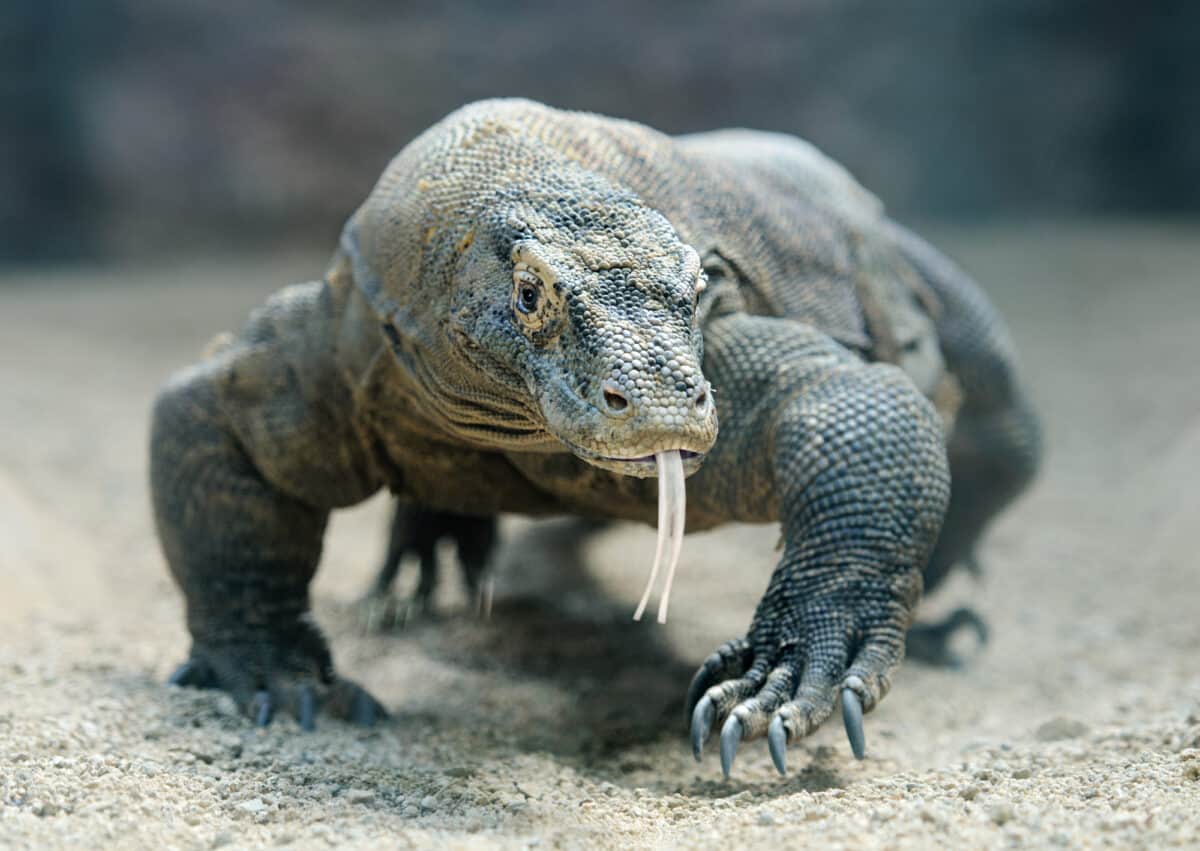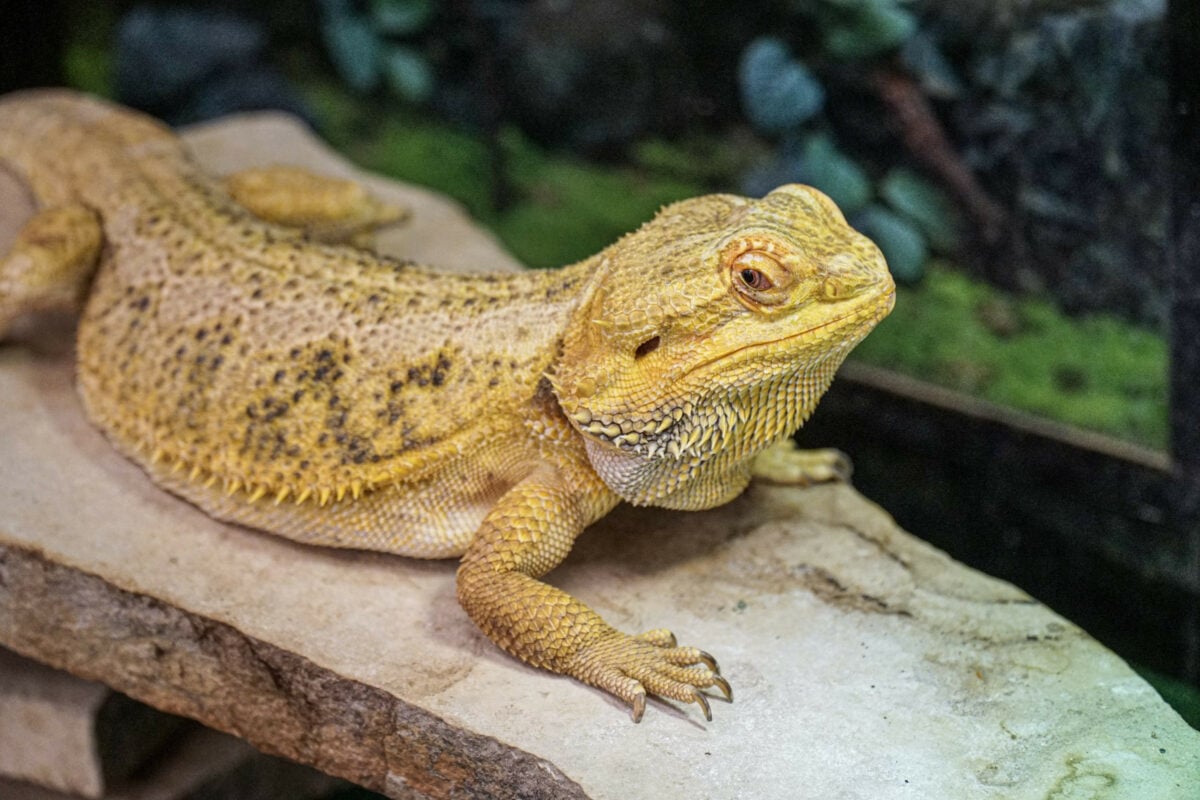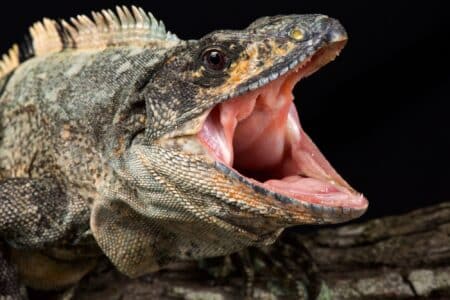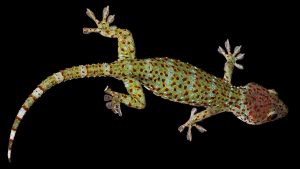Welcome to the world of Lizards! This group of reptiles includes over 7,000 species and can be found on all continents except Antarctica. They come in various shapes, colors, and sizes, from the ferocious komodo dragon, which grows to over 10 feet, to the tiny 0.9-inch nano-chameleon.
Although lizards belong to the same family as snakes, these scaly reptiles are differentiated by their external ear openings, moveable eyelids, and legs. However, as always, the rule has some exceptions, as some do not possess all three of these characteristics. Some reptiles considered lizards are geckos, chameleons, iguanas, and more!
I’ve always been fascinated by these reptiles and their various adaptations and abilities. How cool is it that some regrow missing limbs, and others have translucent bodies showing off their internal organs? I hope the information here will intrigue you just as much.
Go through the whole article or jump to any section below!
Overview

50 Types of Lizards
There are 7,000 lizard species, and here is a list of 50 of the most common species. Let’s see how many you recognize:
- Komodo Dragon
- Frilled Lizard
- Flying Gecko
- Marine Iguana
- Panther Chameleon
- Satanic Leaf-Tailed Gecko
- Gila Monster
- Thorny Devil
- Green Basilisk
- Texas Horned Lizard
- Blue-Tongued Skink
- Veiled Chameleon
- Mexican Molting Lizard
- Tokay Gecko
- Eastern Water Dragon
- Leopard Gecko
- Chuckwalla
- Madagascar Day Gecko
- Fire Skink
- Knight Anole
- Australian Water Dragon
- Cuban False Chameleon
- Desert Iguana
- Chinese Water Dragon
- Baja Blue Rock Lizard
- Bearded Dragon
- Mossy Leaf-Tailed Gecko
- Jackson’s Chameleon
- Eyelash Crested Gecko
- Agama Lizard
- Shingleback Skink
- Collared Lizard
- Spiny-Tailed Iguana
- Jeweled Lacerta
- Gold Dust Day Gecko
- Draco Lizard
- Pygmy Chameleon
- Armadillo Lizard
- Green Iguana
- Mountain Horned Dragon
- Yellow-Headed Gecko
- Zebra-Tailed Lizard
- Henkel’s Leaf-Tailed Gecko
- European Eyed Lizard
- Nile Monitor
- Cape Dwarf Chameleon
- Rhino Iguana
- Blue Spiny Lizard
- Pink-Tongued Skink
- Long-Tailed Brush Lizard
How Many Lizard Species Are There?
There are over 7,000 lizard species—that we know of! Thanks to the ever-evolving world of science, new species are found, and other species are reclassified due to advances in genetic testing, continuously changing the known number of species.
Lizards belong to the order Squamata. Many suborders fall under this order, including the one snakes belong to. However, lizards refer to all the suborders except snakes. Lizards include many scaly creatures with limbs, moveable eyelids, and limbs. These include iguanas, geckos, skinks, chameleons, and more.
These lizards have various impressive adaptations, like the Leaf-tailed Gecko, which looks just like a dead leaf to protect itself from predators. The Jesus Lizard got its name from its ability to run on water, and the Jackson’s Chameleon, which births live young—incredibly rare in reptiles!
Where Do Lizards Live?
Lizards are found in various habitats on every continent except Antarctica. Here are a few of the habitats these reptiles call home:
- Tropical Regions: Many lizard species live in lush rainforests and tropical regions like jungles.
- Deserts: The same goes for deserts and arid regions, where many lizard species are adapted to thrive in harsh conditions.
- Forests: Many lizard species also live in various forested areas, be it on the forest floor or in the canopy of trees.
- Grasslands: Open grassland areas are also home to many lizard species who prefer these environments for daily activities.
- Mountains: Many lizard species are well adapted to thrive in the different terrains supplied by mountains.
Learn More About Lizards
Most Popular Species
| Name | Scientific Name | Size | Diet | Fun Fact |
| Komodo Dragon | Varanus komodoensis | 10 feet plus their tail and weigh around 300 pounds | Carnivores – they are apex predators. | They only live on five Indonesian islands and nowhere else in the wild. |
| Blue Crested Lizards | Calotes mystaceus | Average 12 inches in length | Carnivores – insects | They are sometimes called Bloodsuckers due to the red coloring of their heads during mating season. |
| Bearded Dragon | Pogona spp. | 20 to 24 inches in length | Omnivores | They communicate with each other through nods, waves, and other means of body language. |
| Senegal Chameleon | Chamaeleo senegalensis | 8 to 12 inches in length | Carnivores – insects | They are sensitive reptiles and don’t like to be touched. |
| Jamaican iguana | Cyclura collei | 16 to 17 inches in length and weigh around 4.5 pounds | Herbivores | Holds the Guinness World Record for the rarest lizard on earth! |
| Marine iguana | Amblyrhynchus cristatus | Between 2 and 4.3 feet and weighs between 1.1 and 3.3 pounds | Herbivores – they eat mostly algae. | They sneeze out the excess salt they absorb from the ocean! |
| Tokay gecko | Gekko gecko | 10 to 12 inches in length | Carnivores | They can’t see color, only black and white! |
| Jackson’s chameleon | Trioceros jacksonii | 10 to 15 inches in length including the tail, | Carnivores | They give birth to live young! |
What Do Lizards Eat?
As with most animals, lizards’ diets differ between species and habitats. Lizards are often carnivores, preying on insects or invertebrates smaller than themselves. Their hunting strategies differ, ranging from the sit-and-wait approach to foraging or ambushing prey through their hidden presence.
Bigger lizards like Komodo Dragons and monitor lizards hunt larger prey, like small mammals, fish, eggs, and birds. These lizards are much stronger than the smaller species and rip their prey apart with their strong jaws, or even swallow their meals whole! Komodo Dragons can even hunt and kill big animals like water buffalo.
Very few lizards, about 2% of the population, are herbivores. These lizards, mostly iguanas, eat various plants, flowers, and fruit.
7 Facts That Suprised Me About Lizards
- Some lizard species can drop their tails when they feel threatened and grow them back!
- Very few lizards are dangerous to humans. The Gila Monster and Komodo Dragons are exceptions. They have extremely toxic venom that they use to kill their prey.
- Geckos can walk on ceilings thanks to the microscopic hairs on the bottom of their feet that help them stick to surfaces.
- Chameleons can look in multiple directions at once.
- Even though lizards are a quiet species, some make sounds during mating and to put off predators.
- Many lizard species get enough hydration from their food that they don’t need water.
- Chameleons don’t just change color to camouflage themselves; they can also change color depending on their mood, environment, or stress levels.
Images & Videos of Lizards
FAQs
Lizards, like all reptiles, are cold-blooded or ectothermic animals. This means that they cannot regulate their body temperature the same way mammals can, but are reliant on their environment to do so. This is why we often see them baking in the sun or hiding in the shade!
As with any pet, you have to make sure that you are ready to commit to care for them. These reptiles have specific social and physical needs depending on the species, which should be adhered to to avoid any health problems.
Chameleons change color to express their emotions and needs. Their color change can indicate their need to mate, fight, or show submission to another chameleon that sees them as a threat.
Not all species can swim. Others can, and some even excel at swimming like the Chinese Water Dragon which is said to be faster in water than on land.
Lizards’ lifespans differ depending on the species and their environments. Geckos typically live for about 10 to 15 years, Iguanas for around 20 years, Chameleons live between 5 and 7 years, and the large Komodo Dragon can live for over 40 years.
How Do Lizards Reproduce?
Most lizards are oviparous, meaning they reproduce by laying eggs after mating. These eggs are laid where they are protected from predators and the external environment and will hatch after varying periods, depending on the species.
Other lizards are ovovivparious, which means they give birth to live young. These lizards carry and hatch the fertilized egg inside their bodies, birthing live offspring. Then, there are a few who reproduce asexually. Like the New Mexico Whiptail, these lizards are all female and can lay eggs without being fertilized. This is a form of asexuality called parthenogenesis.
Latest In Conservation

Over 240 lizard species are listed as endangered worldwide, and the numbers of many other species are declining. Many factors play a role in their declining populations, including habitat loss, climate change, illegal pet trade, and invasive species targeting their habitats and food sources.
They play a vital role in the ecosystems they inhabit, whether they are prey acting as food for predators, or predators themselves controlling the population of other species such as insects.
Conservationists are raising awareness and education on the importance of lizards to biodiversity and ecosystem health. They advocate for implementing protection laws and creating protected areas where they can thrive in their natural habitats.
My Experience
I remember very vividly how sad I was the first time a saw a gecko drop his tail. Luckily, my dad educated me on their defense mechanism, and I couldn’t help but think how awesome!
Now as I am older and often in the mountains hiking, I keep a keen eye out for these scaly reptiles and try my best to identify them. This led to me wanting to know more about their lives so I can be the one shouting out cool facts about them as the hike carries on.
I hope the information here has given you some cool facts about lizards as well, and maybe even sparked your intrigue in their fascinating lives. If you would like to know more or ask any questions, feel free to do so in the comments!
Learn more about reptiles:
Newest Category: Lizards
- Importance of Dogs in Anti-poaching – Insights From A Game Ranger - October 21, 2024
- The Heartbreaking Reality of the Illegal Orangutan Trade in the UAE - October 21, 2024
- Adorable Lion Cub Meets His Dad For The First Time In Denver Zoo - October 21, 2024






